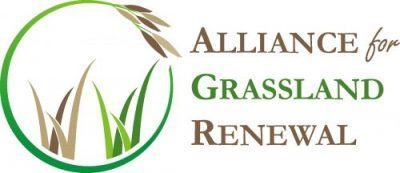If you look at grandma’s wallpaper long enough, the tendency is to be content with it, perhaps even appreciate it. That was the experience Darrel Franson had in 1993 when moving 700 miles south from his central Minnesota farm, to establish his 127-ac farm of near 100% endophyte-infected KY-31 tall fescue in southwest Missouri, near Mt. Vernon. “My learning curve was straight up,” Franson recalled in initially dealing with his newfound forage. “All this beautiful grass in this country, waving in the wind, and then to find out it contained a toxin,” Franson said, “it was a whole new world.”
Franson, as he had come accustomed to doing in his 33-year career in agribusiness, began to dig deeper into tall fescue toxicosis. He quickly found adverse effects in livestock (from grazing KY-31 tall fescue) was first reported in 1948, but as Franson said, “We’ve dealt with it this long, how can this be? It doesn’t have to be.” Franson then acted, as he “resolved to accomplish certain things, I resolved to manage it.”
From there, Franson first attended a University of Missouri extension grazing school, which he credits as the best thing he’s ever done, agriculturally. “I went home and began to intensively manage,” Franson said. He also began to manage his KY-31 to try to overcome the effects by drilling in clovers and lespedeza, kept his KY-31 vegetative, feeding a medicated mineral, transitioned to a fall calving herd and limiting nitrogen fertilization. While his calf gains were up around 5% and abortions were down, he still had foot problems and increased mineral costs.
It was at this point, the transition began. “I’m a numbers guy, I do the math. Why feed toxins at all?” Franson recalled learning of a new, novel endophyte tall fescue. He researched it extensively and, in 2001, planted his first 11-acre stand of MaxQ novel endophyte tall fescue. Franson, like many growers, was confronted with the realization of removing some of that “beautiful grass.” “The [hardest part], personally, was killing a perfectly good stand of fescue. And truth be known, [it had] been there for 50 years, it wasn’t really so perfectly good anymore, but it was all I had.” In 2002, he added another 20 acres stand of novel tall fescue, and “we never looked back.” Franson converted another three 40-acre tracts, but still had one field he rented in toxic tall fescue.
Franson has learned how to deal with acreages of toxic tall fescue alongside novel, non-toxic stands. He recalled an instance where, in November of 2010, his herd had been on novel endophyte tall fescue for 102 days before having to go into a field of toxic tall fescue for available forage. The following January, Franson had to put two of those animals down with fescue foot. “It’s grotesque, we don’t need to be doing this to our cattle,” he said. Soon thereafter, he convinced his landlord to convert the toxic rented field into novel tall fescue and the rest is history.

Detailed record keeping is a source of Franson’s success. “Measure it, manage it, and monetize it,” he said. One such hurdle for growers converting to novel stands is the upfront cost; Franson’s figures show $200 per acre cash cost in renovating, though he’s happy to share he’s able to recoup those costs in less than 2 years. “It’s almost as if your return rate is your stocking rate,” Franson said. As with many growers across the tall fescue belt, Franson is quick to credit novel endophyte tall fescues with many acclaims like higher weaning weights and weaning percentages, and therefore more calves sold annually, as well as improved heifer cycling and conception rates. “I think novel endophyte (tall fescues) is the way to do it,” he says, “and the science is solid behind it.”
Darrel Franson is a regular attendee at the Alliance for Grassland Renewal’s workshops. These workshops aim to educate producers on the science of novel endophyte tall fescue varieties, and how to convert from toxic tall fescue to non-toxic pastures. In 2021, the Alliance for Grassland Renewal is hosting a virtual workshop (February 23-25, evenings) and two in-person events in Mt. Vernon, MO (March 23), and Lexington, KY (March 25). Learn more and register by visiting www.grasslandrenewal.org/workshops.
~ Jeremy Hayward, Mountain View Seeds
The Alliance for Grassland Renewal is a national organization focused on enhancing the appropriate adoption of novel endophyte tall fescue technology through education, incentives, self-regulation and promotion. For more resources or to learn more about the Alliance for Grassland Renewal, go to www.grasslandrenewal.org
